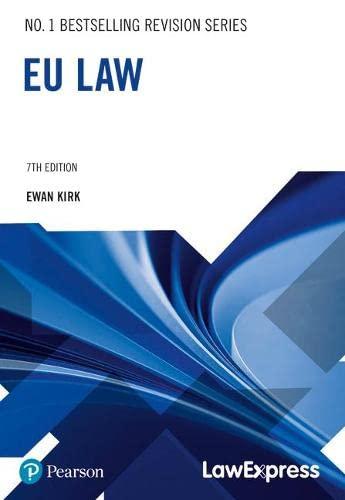Answered step by step
Verified Expert Solution
Question
1 Approved Answer
A leader is someone who has management authority and can influence others. True False Leadership defines the process while leader identifies the person. True False
- A leader is someone who has management authority and can influence others.
- True
- False
- Leadership defines the process while leader identifies the person.
- True
- False
- Having leadership traits alone is not useful for identifying who is likely to become a leader.
- True
- False
- A major goal of behavior leadership is to find ways to train people to be leaders.
- True
- False
- Fielder's model proposed that leadership success was determined by matching leadership style to situation.
- True
- False
- Fielder's contingency model focused on having employees describe their ideal co-worker.
- True
- False
- Everything a manager does involve communication.
- True
- False
- In order to be a sent, a message need to be decoded.
- True
- False
- Some messages, like the spoken word, does not need to be encoded to be sent.
- True
- False
- Feedback is a response that confirms a message.
- True
- False
4
- Which of the following best describes " organizational behavior" ?
- The actions of organizations in the workplace
- The study of the workplace
- The study of the actions of people at work
- Which of the following are goals of organizational behavior?
- To explain, document and control behavior
- To explain, predict and influence behavior
- To predict, understand and document behavior
- After spending several hours looking over an architect's plan, Wendy formed a new impression for a new building design. Which component of attitude did she change?
- Affective
- Behavior
- Cognitive
- In everyday use, the term "attitude" refers only to the ____component of attitude.
- Cognitive
- Informational
- Affective
- Many managers in today's business world have restructured work _______
- Around individuals rather than teams
- Around teams rather than individuals
- Around both groups and teams
- This kind of work group brought together to accomplish a specific job or single activity, such as the development of a new product.
- Command group
- Task group
- Informal group
- The kind of work group brings individuals together from different work disciplines with different knowledge and skills.
- Formal group
- Cross-functional team
- Command group
- This stage involves the most conflict during the entire group development process.
- Forming
- Storming
- Norming
- The direction of an individual's motivation an be channeled to benefit ______
- Only the individual
- Both individuals and/or organizations
- An individual's family only
- _________assumes that employees have little ambition, dislike work and avoid responsibility.
- Theory X
- Theory Y
- Belongingness Need
5 .Briefly explain Herzberg's Theory of Motivation.
Step by Step Solution
There are 3 Steps involved in it
Step: 1

Get Instant Access to Expert-Tailored Solutions
See step-by-step solutions with expert insights and AI powered tools for academic success
Step: 2

Step: 3

Ace Your Homework with AI
Get the answers you need in no time with our AI-driven, step-by-step assistance
Get Started


